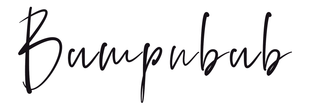Tearing During Childbirth

We know that knowledge is power, and when you are aware of information regarding tearing during childbirth, you will have the power to decrease your risk of a severe tear. During birth, your perineum thins and stretches over your baby’s presenting part, usually their head.
The perineum is the area of skin between your vagina and anus where a tear may occur at birth, although there are a few measures you can try to help stretch the muscles in the perineum to minimize your chance of tearing. Perineal tears are common, with over 85% of women experiencing perineal trauma according to a review of perineal tears by the Australian Journal of General Practice. Although most perineal tears are sutured back together and heal well, the aim for every midwife and OB is to avoid a tear at birth for all women.
-
Perineal tears are classified from first degree to fourth degree tears. A first degree tear is minor and involves the first layer of skin and a fourth degree tear being severe involving the skin, muscle and anal sphincter.
-
Depending on the classification of the perineal tear, your healthcare provider may then recommend suturing the tear with dissolvable stitches so it heals well.
During the antenatal period, you should be informed by your healthcare provider on your overall risk of perineal injury with a vaginal birth. The Queensland Clinical Guidelines on perineal care discusses the importance of offering all women evidence-based antenatal education on ways to reduce their risk and severity of perineal injury.
What can you do to prevent tearing?
-
Sometimes perineal tears are unavoidable, although perineal massage is one way to reduce your risk of needing stitches at birth. Perineal massage is an action that can be performed in the antenatal period which is supported by evidence, to reduce your risk of third and fourth-degree tears at birth. Massaging the perineum helps to gently stretch the skin and tissue around the vagina before giving birth which can have several benefits for you. Antenatal perineal massage does reduce the severity of perineal tears, although makes minimal difference to a woman’s overall risk, states Beckmann and Garret. Perineal massage can also decrease perineal pain in the postpartum period. Your healthcare provider should inform you of the risks, benefits and techniques of perineal massage. You can perform perineal massage from around 35 weeks pregnant, as directed by your healthcare provider, recommended for 5 minutes 3 times/fortnight (check your countries guidelines around this).
-
When bubs head is crowning at birth your midwife or OB may have their hand on bub’s head and tell you to stop pushing or give small pushes to control the rate bub’s head is born and to allow the perineum to slowly stretch. There is research by Albers and Borders that supports slowing the rate at which your baby’s head and shoulders emerge can help prevent perineal injury.
-
The position you give birth in can also impact the likelihood of tearing. You commonly see women in movies giving birth on their back and it is portrayed as the normal way to give birth, when in fact laying on your back is the least ideal position for your risk of tearing as there is more pressure on your perineum. Study by Soong and Barnes on maternal position and perineal trauma concluded the positions that resulted in less suturing are side-lying and kneeling on all-fours.
-
The final recommendation for avoiding severe perineal tears at childbirth is warm compresses. These warm compresses are applied to your perineum with your consent during the pushing stage of labour and can significantly reduce your risk of a third or fourth-degree perineal tear. Warm water immersion in labour or having a water birth, works in a similar way as warm compresses to decrease your risk of a tear.
After your baby is born and in your arms, your healthcare provider will check your perineum with your consent. Your midwife or OB will then inform you of what they have assessed and what they recommend in regard to suturing or not suturing the tear (if there is one). This will form part of the debriefing process post-birth and include the nature of the injury, the treatment, follow-up and any effects on future births. Your postnatal care should then involve educational measures on how to reduce pain and prevent infection of your perineal tear.
Postpartum perineal care recommended by the Queensland Clinical Guidelines includes:
-
Clean the perineum regularly and change your pad every 3-4hrs
-
Be aware and monitor for any signs of infection
-
Take pain relief recommended by your healthcare provider to keep you comfortable after a perineal injury. Paracetamol and ibuprofen work well for perineal pain
-
Apply ice packs to the perineum for 10-15mins at a time for the first 24-72hrs after birth. Ice will reduce pain in the area and help decrease swelling and bruising
-
Laying on your side reduces swelling in the perineum and is recommended to promote perineal recovery
-
Consult a women’s health physiotherapist before commencing any pelvic floor exercises or strenuous physical exercise
-
Ensure you have follow-up organised for 6 weeks postpartum to assess wound healing of your perineum
Always chat with your health professional if you have any questions or concerns.
This blog was originally written for my beautiful friends at Haakaa - I have an amazing discount code for any Haakaa product - Code: Bumpnbub15. The most amazing breast pumps, milk storage bags, breast pads - anything you can think of to make breastfeeding easier, they’ve got it!
